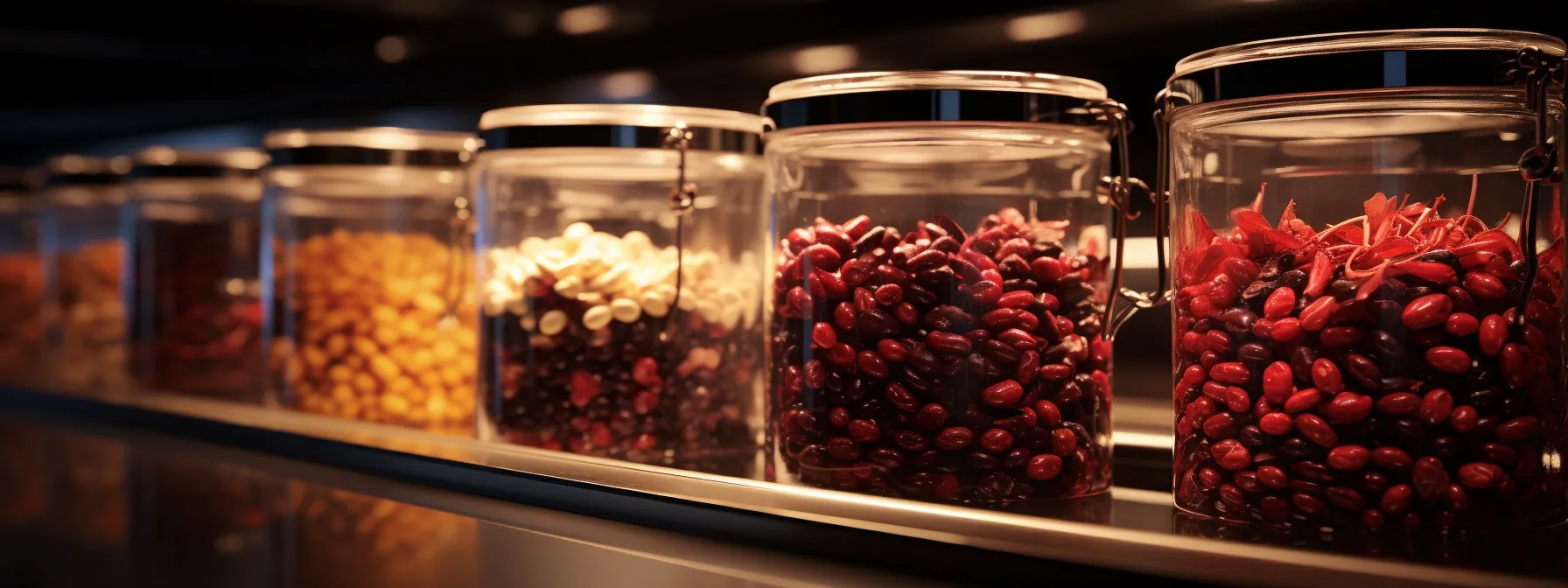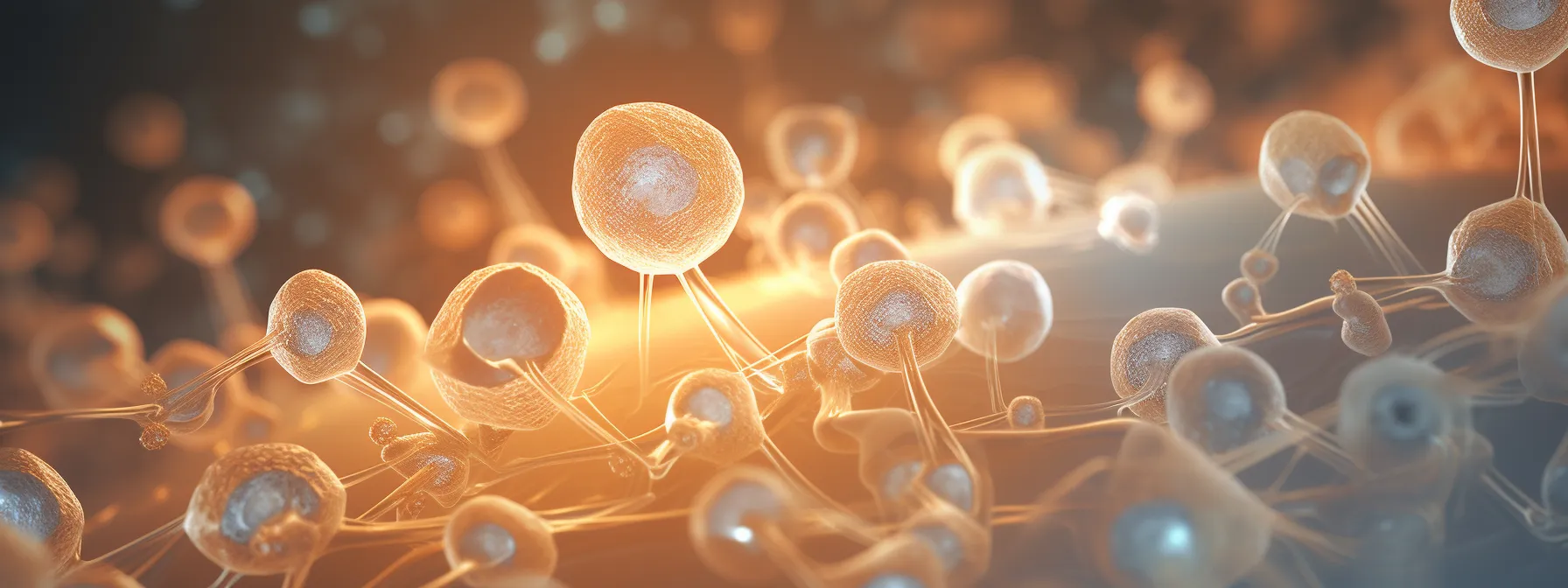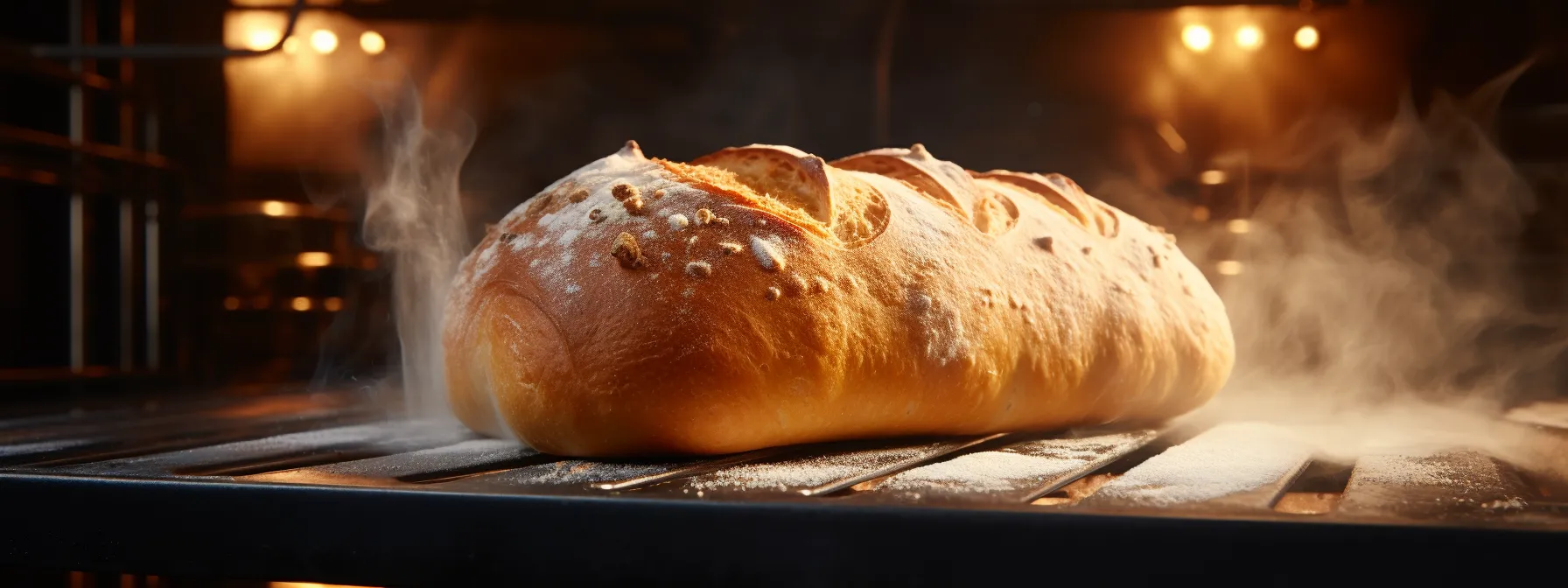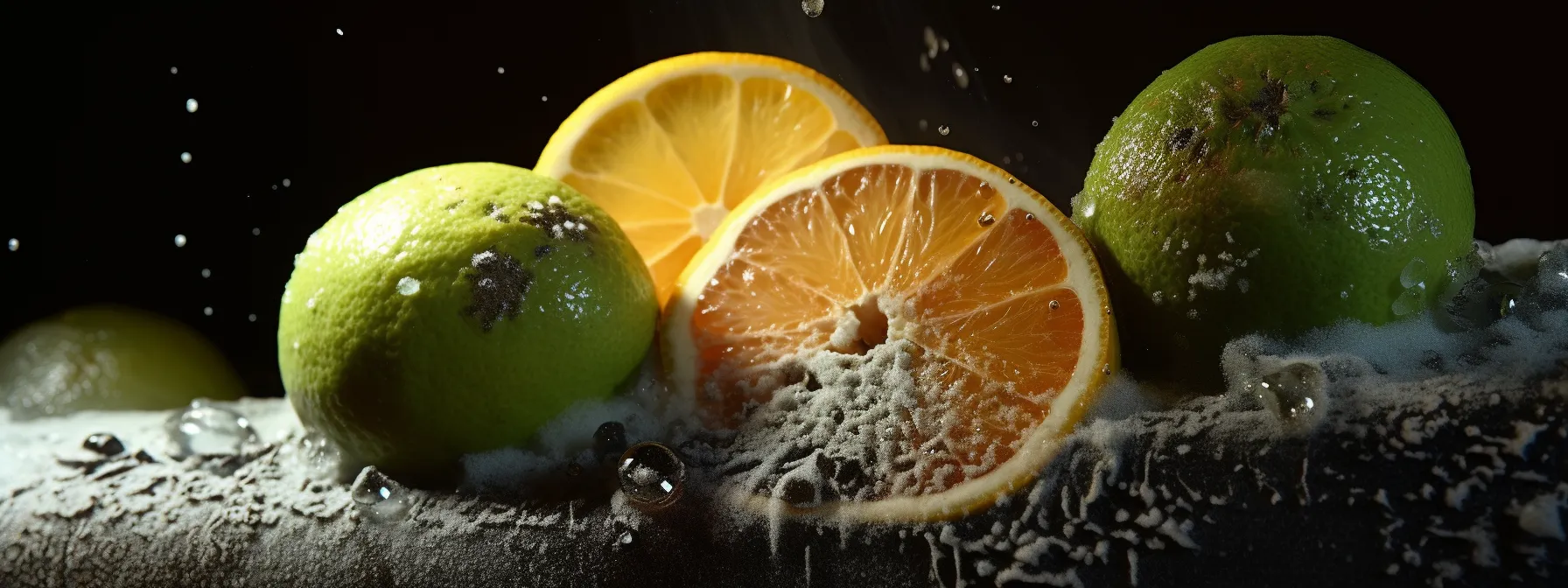aerobic fermentation processing
Gripping my microscope, I am often humbled by the silent epics unfolding across the cellular landscape of Saccharomyces cerevisiae. The significance of their contribution in shedding light on the Crabtree effect, it brings to mind the subtle symbolism of David against Goliath. From data collection, to the electron transport chain, to the transcriptome, every step resembles an exhilarating chase for answers, like the relentless pursuit of the elusive theophylline in a caffeine-laced mystery novel.
Table of Contents
- 1 Understanding the Processes and Differences in Aerobic and Anaerobic Fermentation
- 1.1 Understanding the Basics of Fermentation
- 1.2 Detailed Breakdown of Aerobic Fermentation
- 1.3 Key Characteristics of Anaerobic Fermentation
- 1.4 Dissecting the Differences Between Aerobic and Anaerobic Fermentation
- 1.5 Practical Applications of Both Types of Fermentation
- 1.6 Case Studies on Aerobic and Anaerobic Fermentation Processes
Understanding the Processes and Differences in Aerobic and Anaerobic Fermentation
Picture fermentation, the scientific ballet, as a lively party where energy-savvy microorganisms dance to the rhythm of glycolysis.
Through this dance, they transform pyruvate into a parade of products, like lactate and acetaldehyde, under the watchful eyes of crabtree and yeast species.
Come, journey with me as we explore the ballroom of fermentation – from the energetic, oxygen-decked soiree of aerobic to the covert, airless gathering of anaerobic.
We’ll go deep into the intricacies of lactic acid fermentation, ethanol fermentation, and the transformative role of the electron transport chain.
Keep reading as we unlock the secrets and applications of aerobic anaerobic fermentation.
Understanding the Basics of Fermentation

As a renowned enthusiast of aerobic and anaerobic fermentations, my focus amplifies the significance of this intricate life process. Unmasking the marvel behind the term ‘ferment’ captivates my scientific soul, espousing a journey through the bustling cities of microorganisms, the touchstones of fermentation. Glycolysis, you see, is not unlike a bustling hub station, an awe-inspiring metaphor for carbon dioxide highways, where pyruvate and lactate shuttle along as dutiful passengers.
The fermentation process, for what it’s worth, is quite the chameleon, endlessly adapting and shifting to meet the demands of its environment. Caught in the throes of an existential crisis, like a struggling artist seeking validation, the Crabtree effect in yeast species portrays an intriguing plot twist. Acting defiantly against their aerobic nature, these yeast strain, in their artistry, render high alcohol content through anaerobic ethanol fermentation, crisscrossing the edge of scientific mystery.
Through the looking glass, Source forging in the enigma of aerobic anaerobic fermentation unearths treasures in the most unexpected places. Weary of the common cautionary tales like the Corona Virus, we’ve learned to appreciate the understated heroes, the likes of humble microorganisms like Aspergillus Niger. In the end, it is no hyperbole to say that every investigation into the kinetics of fermentation, every examination of lactic acid or acetaldehyde, is a nod to our commitment to the sacred art of science.
Detailed Breakdown of Aerobic Fermentation

As a passionate observer of aerobic fermentation, I cannot help but compare the process to a well-orchestrated symphony. Much like the cacao trees standing tall in the evening rain, lavish with their ripe, sweet pods, aerobic fermentation reaps harvests of energy-rich carbon dioxide, enriching the airspace of the cellular civilization. The principal players, the valiant pyruvate molecules, make their cameo in the electron transport chain, the highlight of the performance.
Marveling at Saccharomyces cerevisiae, it’s not unlike appreciating the cunning cleverness of a fox, employing both aerobic and anaerobic pathways to maximize its survival. The yeast strain’s ability to dance between pathways – a perfect balance between glycolysis and the electron transport chain – has resonating echoes of a delicate, intricate ballet, each move intensifying the mystical allure of this organism. Interestingly, lactic acid fermentation often steals the spotlight, yet the subtle, understated beauty of aerobic fermentation carries its own rewards.
Shifting perspectives, I see the essence of fermentation in the most unsuspecting items. Like the coffee cherry, enclosed within the mucilage is a world waiting to be discovered, a world where the transformations under aerobic conditions yield unique and delicious flavors. It brings to mind the wonder and exhilaration inspired by unearthing a hidden manuscript, each page filled with tales of the triumph and reprogramming of cellular respiration strategies.
With delightful surprise, occasionally, the key to unveiling the secrets of fermentation lay nestled in the raw material themselves. Take silage, for example, a proverbial treasure chest of microorganisms, ready to embark on the fermentation journey under the right conditions. Much like a curious explorer surveying an uncharted territory, the bacterium Lactobacillus in silage remains prepared for the signal to begin its humble but essential role in the process. It’s never merely about the destination, but rather the exhilarating adventure of the fermentation journey that truly intrigues me.
Key Characteristics of Anaerobic Fermentation

Exploring the canvas of anaerobic fermentation presents a vibrant tapestry of robust activity, akin to a bustling market where transactions of energy and elements occur nonstop. The brewer’s yeast, Saccharomyces cerevisiae known famously for its association with beer and bread, gains the spotlight here as it dances in time with the rhythm of glycolysis, a mesmerizing ballet of metabolic transformation. The fermenting yeast strain adroitly devours glucose and excretes alcohol and carbon dioxide, a testament to its metabolic prowess.
Curiously enough, the brewing process of the well-known drink, Kombucha, mirrors the intricate workings of anaerobic respiration. Much like the teas’ unique dance of symbiosis, fermentation manages to flip the script by converting potentially harmful reactants into essential by-products. The pitcher’s microorganism selection: Saccharomyces, Acetobacter, and Lactobacillus, demonstrate their symbiotic prowess by concurrently performing different fermentation types, illustrating the ingenious complexity of the fermentation process.
I’ve always found something inherently poetic about how Aspergillus niger, a typically petrifying mold, transcends its ominous reputation during the anaerobic fermentation process. Maybe it’s the sweet irony of this formidable organism’s potential as a value-adding partner in the fermentation journey. Its role during Aspergillus fermentation in transforming raw material into high-quality nutritional enrichment reminds us not to judge a book by its cover, even if that cover sports a somewhat threatening spore print:
| Mold Type | Role in Fermentation | Product |
|---|---|---|
| Aspergillus niger | Converts starches into simple sugars | Lactic acid, Gluconic acid |
Aerobes take center stage during aerobic fermentation, but without the electron acceptor – oxygen – they relent, surrendering to their anaerobic alter-egos. The shift to anaerobic fermentation allows them to continue their survival saga, notwithstanding the absence of oxygen. A stark reminder of the extraordinary resilience of microorganisms, the process embodies the biblical allusion of turning water into wine – turning adversity into opportunity.
Dissecting the Differences Between Aerobic and Anaerobic Fermentation

Entering the enigmatic realms of aerobic and anaerobic fermentation, one walks the fine line between two worlds, different yet inextricably connected, like the sun and moon ruling the daytime and nighttime skies. The key difference orbits around the presence or absence of an electron acceptor, specifically, oxygen. While aerobic fermentation basks in the rich availability of oxygen, its anaerobic counterpart engages in resourceful innovation, resorting to using other compounds in oxygen’s stead.
Observing Saccharomyces cerevisiae as it undergoes fermentation is akin to reading a well-crafted mystery novel, each twist and turn revealing surprising elements along the journey. Here comes the irony, this microbe, a champion of adaptability, beautifully straddles the path between the two forms of fermentation, enriching our scientific understanding of cellular respiration strategies. Depending on the level of oxygen present, this potent yeast either perfects the art of alcohol brewing in a low oxygen environment or focuses on the energy production in an oxygen-rich atmosphere.
If we could see the energy production under a metaphorical microscope, the aerobic pathway clearly outstrips anaerobic fermentation. Much like an overachiever outshining its peers, aerobic respiration hogs the limelight producing substantially more ATP, painting a striking picture of efficiency. By contrast, anaerobic fermentation, symbolically personifying the humble tortoise amidst lavish hares, musters less energy but exhibits resilience by running an extra mile in resource-limited conditions.
In the grand scheme of things, the story isn’t about which form is superior or more successful. The true marvel lies within the adaptability of these fermentative processes – their ability to switch hats and don a new role as the environmental conditions dictate. It is notably reminiscent of a profound life lesson – adversity often brings forth the innovation in our survival story.
Practical Applications of Both Types of Fermentation

Aerobic and anaerobic fermentation processes serve as silent performers in our everyday lives, masterfully choreographing the creation of our beloved items of decadence and necessity. Aerobic fermentation, under the attentive watch of Saccharomyces cerevisiae, artfully directs the fermentation process for baking, comparing only to an experienced conductor leading a spectacular symphony. Addressing the vast sea of dough, yeast ferments, and the ensuing carbon dioxide aids the dough in its purpose, entrapping pockets of air to give bread its coveted light and airy texture.
Stepping behind the scenes of beverage production, one finds anaerobic fermentation’s fingerprints across a multitude of popular drinks. Be it the classic wine or the trendier Kombucha, the star of the show remains the same – the unsung hero, Saccharomyces. Like the fabled King Midas, this yeast performs its magic, transmuting simple sugars into alcohol and carbon dioxide, the heart and soul of these intoxicating potations.
Delving deeper into fermentative applications, the arena of lactic acid fermentation harbors its own realm of wonder. One needs to look no further than the familiarity of our household dairy items – yogurt, cheese, and kimchi, all owe their existence to this form of fermentation. The essence of preservation techniques, acid environment and complex flavors, all simmer down to the humble work of Lactobacillus, an inconspicuous protagonist of anaerobic fermentation.
A leap beyond food and beverages, anaerobic fermentation takes center stage in waste management and renewable energy sectors. The ever-alluring promise of sustainability, echoed in words of the revered Louis Pasteur, “fermentation is life without oxygen,” demonstrates fermentation’s potential in addressing our burgeoning waste and energy challenges. Thanks to the simple, yet powerful metabolic route of various microbes, organic waste transforms into biogas, a renewable energy source, underscoring the transformational prowess of anaerobic fermentation.
Case Studies on Aerobic and Anaerobic Fermentation Processes

Exploring the diverse world of fermentation, one is drawn to the case study of the Baker’s yeast, Saccharomyces cerevisiae. In my exploration, the yeast’s impressive evolutionary journey was distinctly reminiscent of Charles Darwin’s theory of survival. From being domesticated thousands of years ago for bread and beer production, it uses aerobic and anaerobic processes interchangeably, owing to its dynamic Crabtree effect.
In another fascinating case, the wastewater treatment systems take center stage. Harnessing the power of anaerobic bacteria, they transform organic wastes into biogas and contribute significantly to renewable energy production. Here I perceive an inspiring parallel: Much like the Phoenix rising from its ashes, these systems turn waste into valuable resources, demonstrating yet another remarkable application of anaerobic fermentation.
An intriguing exploration leads me to the world of Aspergillus niger, the black mold. Often mistakenly dismissed due to its potential health risks, this fungus heroically champions citric acid production through aerobic fermentation. Akin to brewing an exquisite potion, it coaxes the raw material, usually sugar-rich substrates, to relinquish their abundant sugars and transforms them into the commonly used preservative.
Another fascinating observation unravelled in the able hands of the plant Gliricidia sepium, used as a feed supplement for ruminants. Riddled with challenging transformation processes, farmers employ anaerobic fermentation, transforming the Gliricidia into nutrient-rich silage. Analogous to alchemists turning lead into gold, anaerobic bacteria such as Lactobacillus initiate lactic acid fermentation, preserving and enhancing the nutritional content, once again testifying to the remarkable versatility of anaerobic fermentation.






